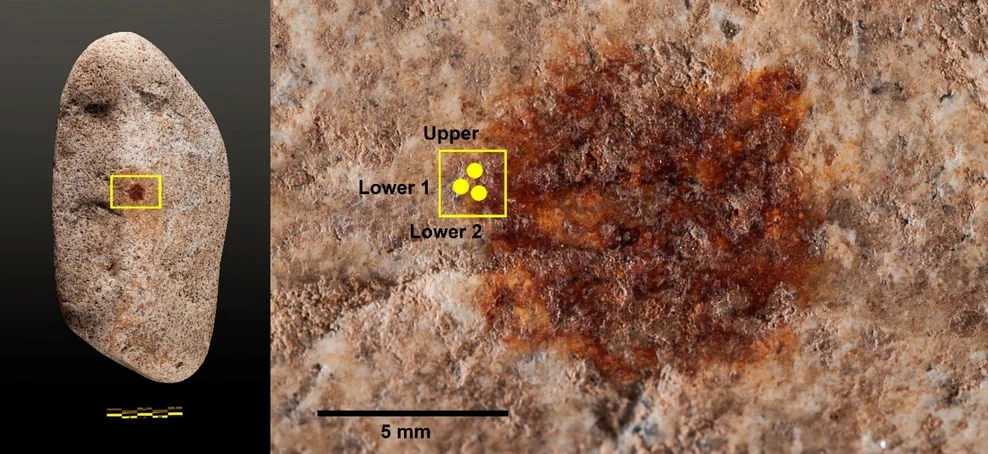Archaeologists have long debated the origin of human symbolic behavior. The dominant idea was that only modern humans (Homo sapiens) were capable of complex symbolic thought and behavior; such as creating art, jewelry, or engaging in rituals. However, growing evidence suggests Neanderthals also developed symbolic behavior independently, around the same time.
This evidence includes decorated ochre items and personal ornaments found at Neanderthal sites. Further backing this claim, researchers have now found the oldest Neanderthal fingerprint, impressed on a painted boulder, dating back to 43,000 years. This boulder contains a red ochre pigment, which is the oldest known symbolic object containing the most complete Neanderthal fingerprint.
“This object contributes to our understanding of Neanderthals’ capacity for abstraction, suggesting that it could represent one of the earliest human facial symbolizations in Prehistory,” say the authors of the study, published in Archaeological and Anthropological Sciences.
This archaeological artifact was discovered in July 2022 during excavation at the Mousterian site of the San Lázaro rock shelter in central Spain.

Researchers used multispectral techniques and forensic identification to identify that the mark came from a human. To get high-resolution and detailed topographical images of the surface, the team carefully collected three micro-samples from the specimen, taking extra care to minimize damage.
From the same archaeological level of the site, researchers found 23 pebbles, mostly used for utilitarian purposes, like hammerstones or axes. However, the scanning electron microscopy (SEM) and multispectral analysis revealed the boulder, with a red dot, was manipulated for decorative purposes.

Researchers hypothesize the pebble was collected from a riverbed and transported to the interior of the rock shelter. Ochre was applied specifically with the tip of a finger soaked in pigment. But why did Neanderthals do this?
The team proposes the rock is a visual symbol, resembling a human face; with eyes, a mouth, and a nose. The ochre dot at the center was deliberately placed over the pebble to highlight what looks like a nose ridge. Meanwhile, two smaller pits act as “eyes” and a larger pit as a “mouth.”
This behavior, where one interprets the natural features of an inanimate object as mimicking facial traits is called face pareidolia. It's a sophisticated cognitive process that some researchers have suggested offers evolutionary advantages by heightening social interaction.
“This discovery substantially contributes to global knowledge about human evolution and represents a notable advance in our understanding of the symbolic behavior of our ancestors,” says Spain's National Research Council (CSIC) in a translated statement.
The study has been published in Archaeological and Anthropological Sciences.






